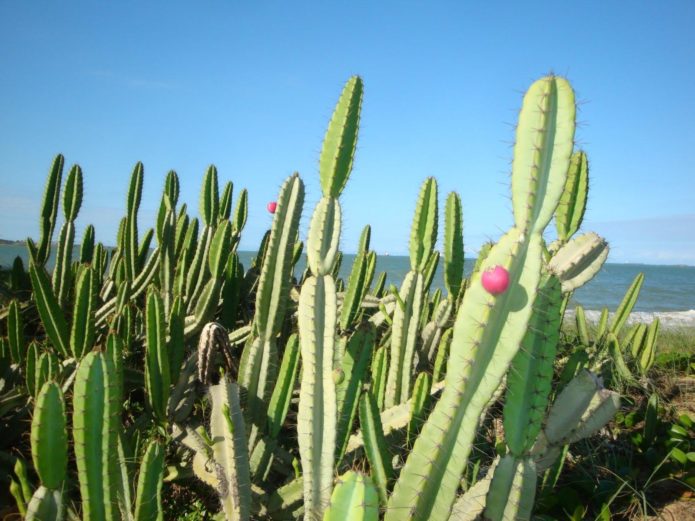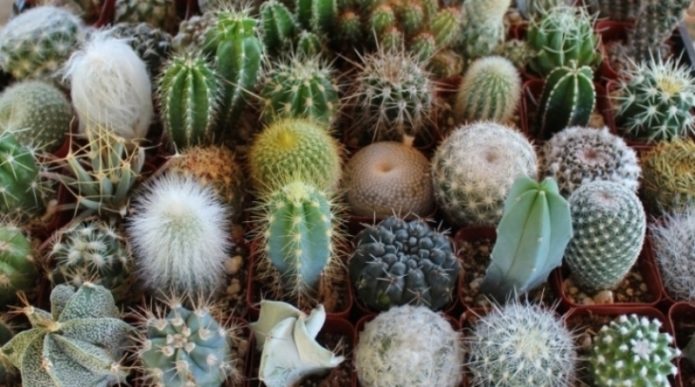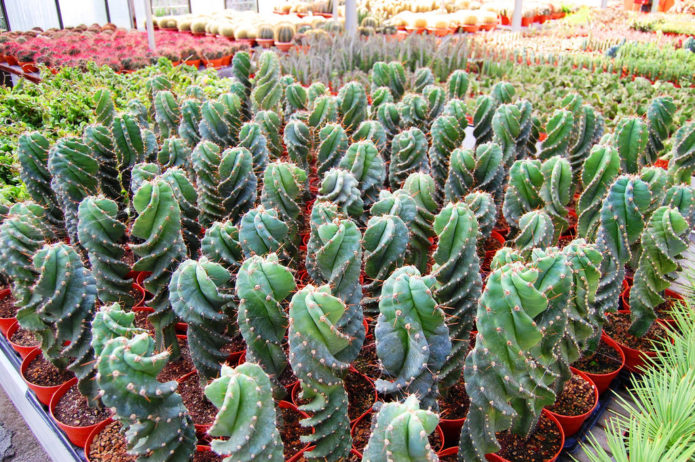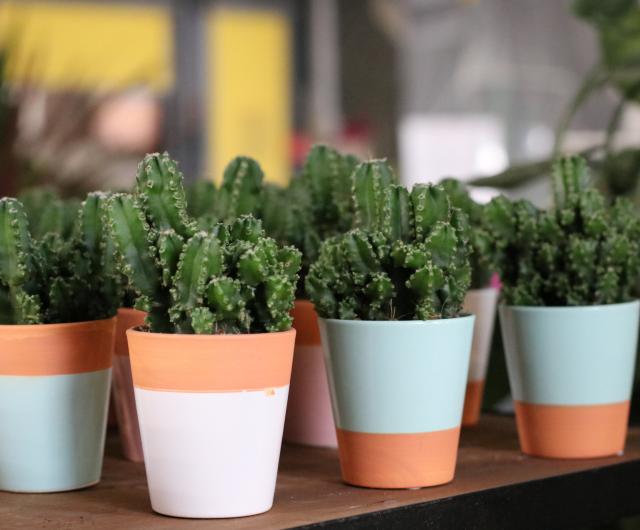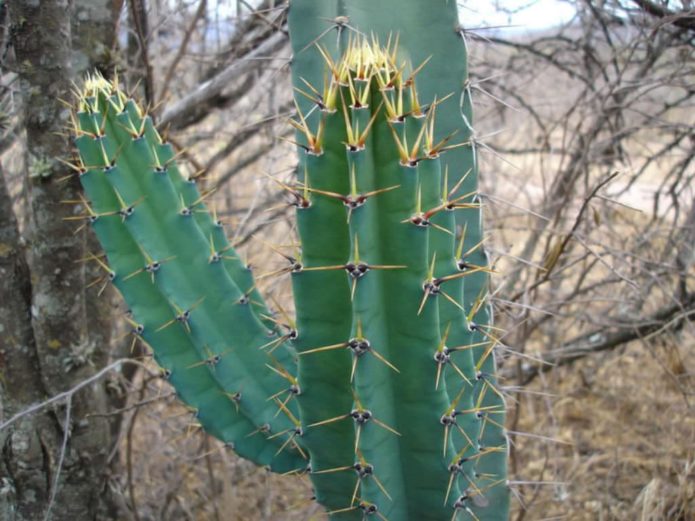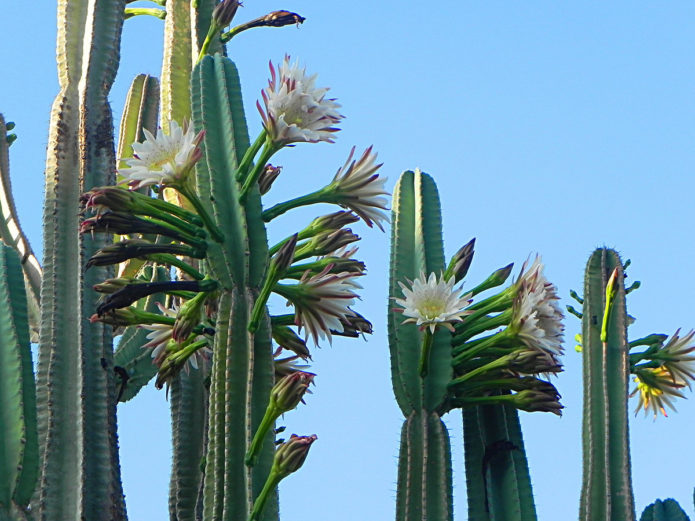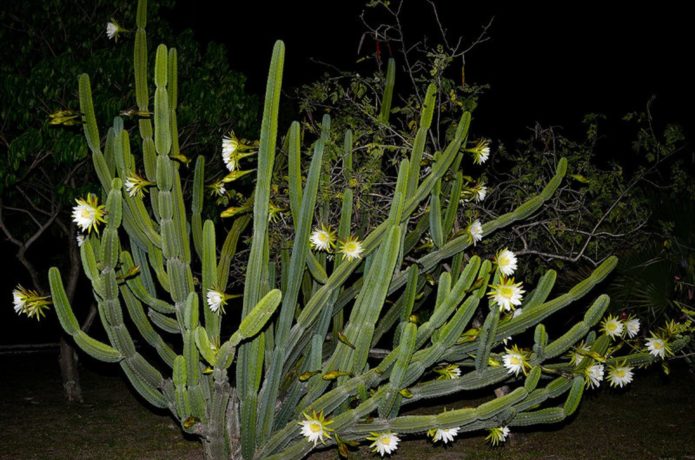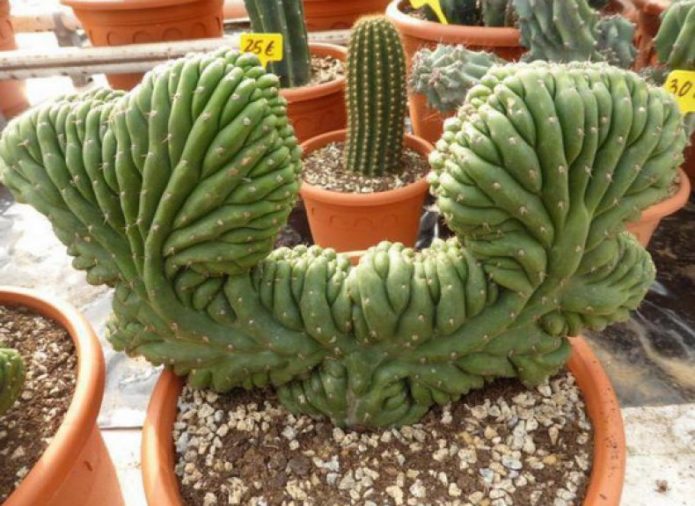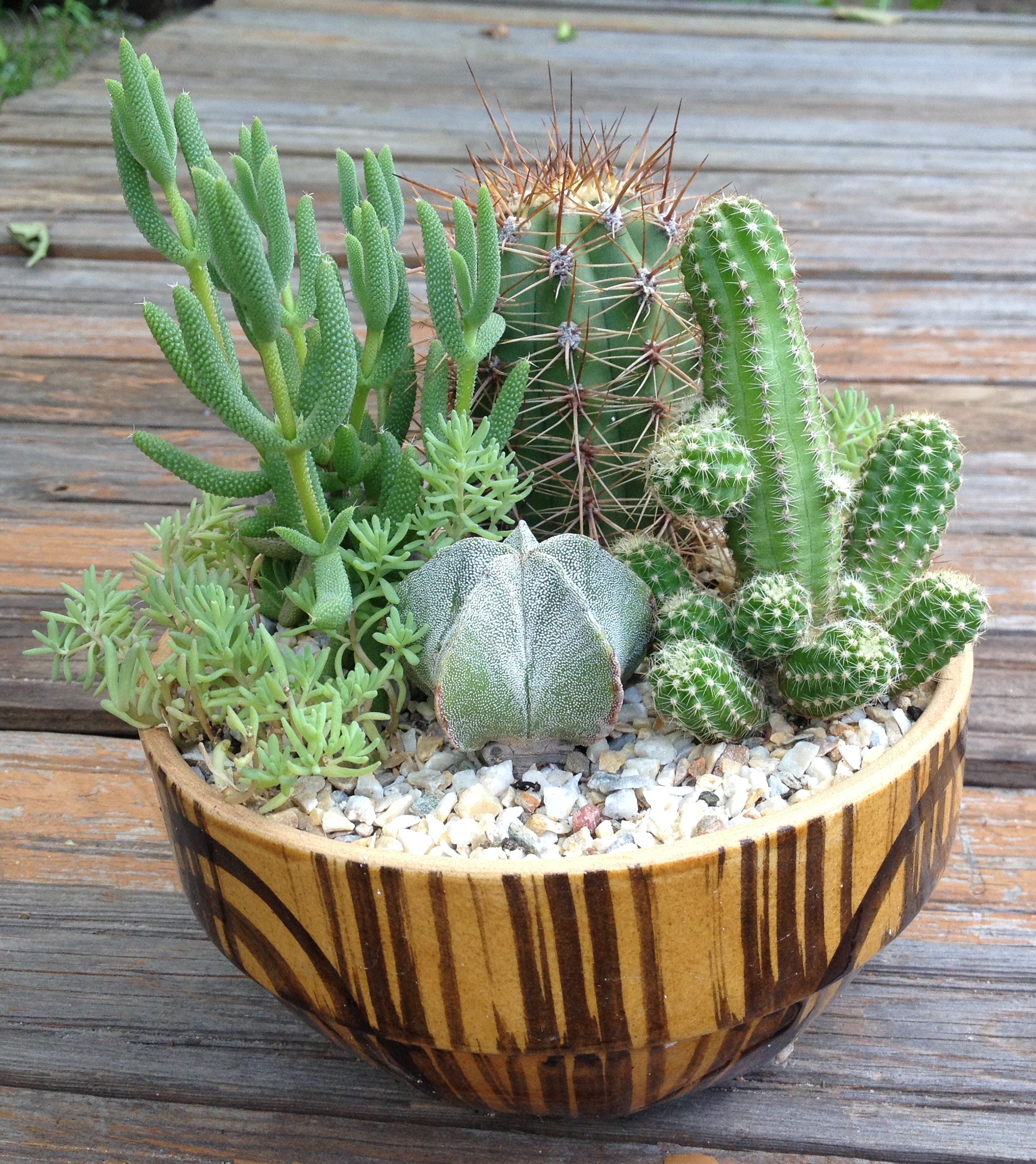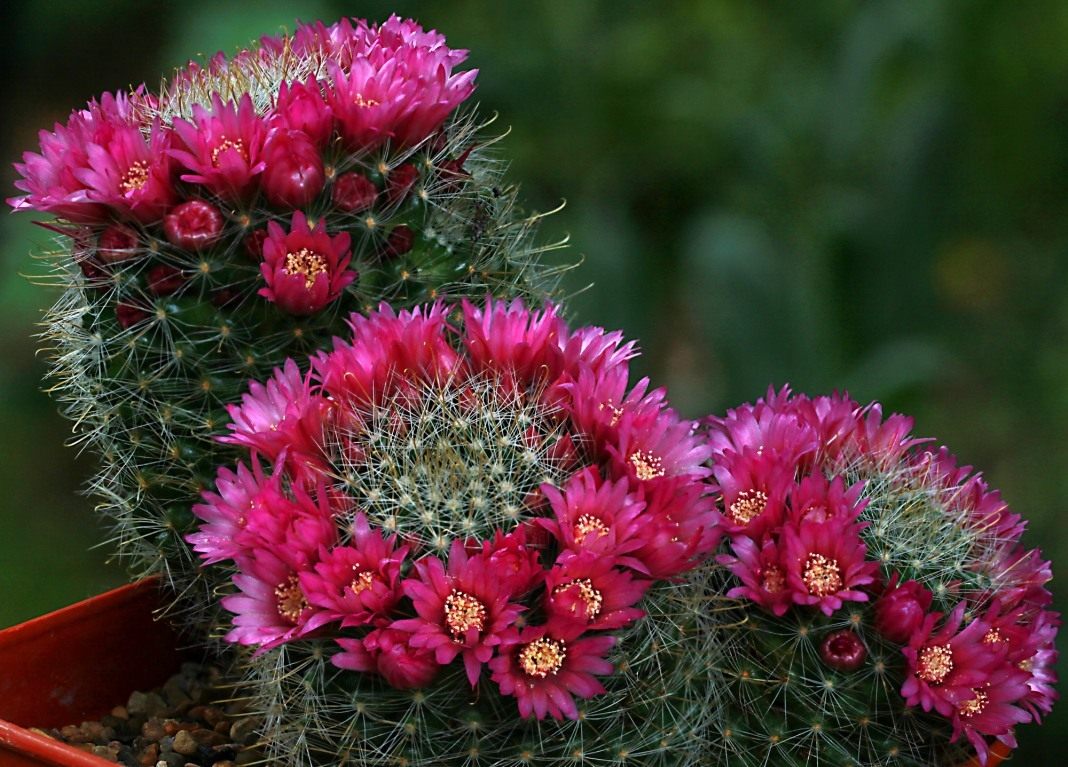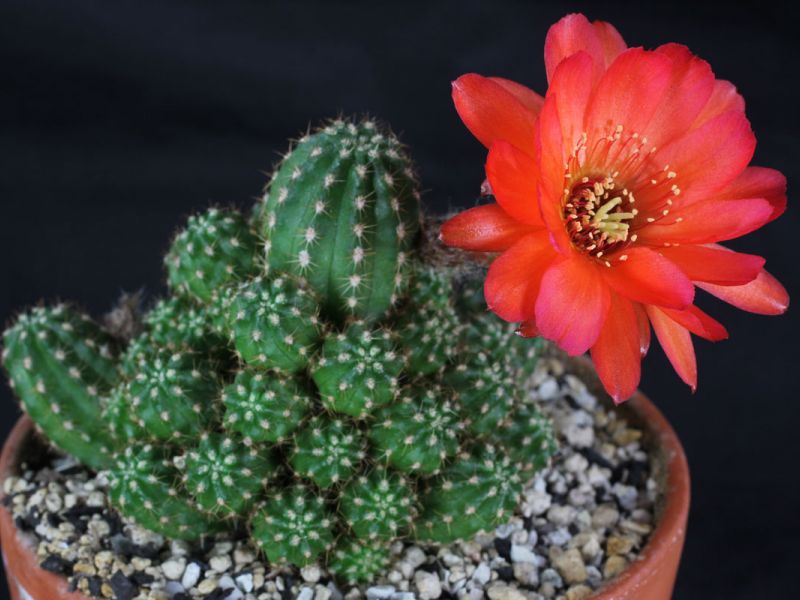Many flower lovers dream of taming some exotic specimen. But worries that an unusual plant needs special care make them abandon this venture. The ideal choice for such reinsurers would be Cereus, a giant cactus from South America. A variety of varieties allows you to choose a plant for every taste, and the unpretentiousness only makes flower growers fall in love with themselves even more.
Content
Cereus: what is known about him?
Cereus is a succulent like other cacti. A lot of moisture is stored in its juicy trunk. The pulp is hidden under thick skin with a dense wax coating.
South America and Western India are considered the birthplace of Cereus. From the Latin alphabet, the name "Cereus" is interpreted as "wax candle", they are also called "desert torches" and "candlesticks". Such "fire" names appeared thanks to travelers who set fire to the trunks of old cacti. The dried pieces of plants burned perfectly and illuminated the desert for a long distance.
Cactus in the wild
In the wild, Cereus is considered a giant. Usually it reaches 6–10 meters in height, and some specimens stretch up to 20 meters. In addition, this cactus is a long-lived record holder that lives up to 300 years. By the age of 50, it reaches its maturity, and between 75 and 100, branches begin to appear on the huge trunk. Moreover, the number and location of branches varies greatly, so it is unlikely that it will be possible to find two identical cacti.
Interesting! The "cactus thickets" in the Mexican deserts make an indelible impression on tourists. These are giant pillars up to 15 meters high and half a meter thick, which branch out from the middle in the form of a candlestick.
Signs and superstitions
All cacti, including Cereus, have amazing energy and almost magical properties. They hide the essence of Yang and the essence of Yin, therefore cacti are considered universal helpers for people. For example, Cereus can be placed at the front door to protect the house from negative energies and burglars.
But at the same time, cacti are very fond of places with poor energy. If quarrels and negativity reign in the family, the plant will grow rapidly, actively branch and live a long time. Therefore, do not be discouraged if cacti do not take root in you: this means that the atmosphere in the house is good.
Who is it for
Cereus cultivation is possible even for beginners. The plant is non-poisonous, its fruits are even eaten. But there are two features that a florist should know about:
- Cactus flowers have a very strong aroma.In sensitive people, it can cause insomnia and headaches.
- Cactus needles grow very quickly. If it is in a small room, small children and animals could be injured.
Popular species and varieties: names, photos and descriptions
Cereus has more than 50 species - from miniature to giant. The most popular varieties are striking in their variety.
Peruvian Cereus (Uruguayan, or Peruvianus)

Peruvian Cereus blooms with flowers with an unpleasant smell, but after that edible berries are formed on it
It is also called "rocky" because of its original shape, like rocks. The stem is gray-green.
Separately, it should be said about such a form of Peruvian Cereus as monstrose (also monstrose, or monstrozus). Under indoor conditions, this species does not bloom, but its appearance is varied, because many hybrids have been created based on it.
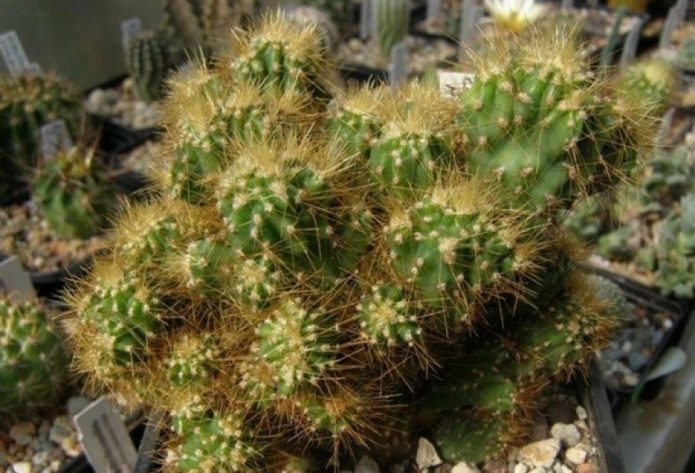
This is the most popular form of cereus among flower growers, which does not require as careful care as others.
Spiral
Thick stems are twisted in a spiral with spines 2-3 cm long. The color of the plant is green with the addition of brown, the flowers are pinkish-white.
Azure
It is called so because of its pale blue color. Many branches, fragrant white flowers.
Paolina
Young plants are light green in color, with age it becomes richer.
Validus
The stems are bluish, each with 4 to 8 ribs. Milky flowers.
Forbes
A cactus that looks like a tree or shrub with many branches. In adulthood, it has a height of 2 m and a diameter of 0.5 m. Flowers are medium-sized, white, with a red core.
California giant
The largest member of the genus Cereus and the largest cactus in the world. The average height is 15 m, and the largest specimen is 25 m.
Yamakaru
Standard stem of oblong shape with many light needles. Flowers open only at night and reach 20 cm in diameter.
Growing a cereus: basic requirements
Like most cacti, cereus are unpretentious in terms of maintenance and care. But there are some recommendations that a beginner cactus grower should take into account.
The soil
For good growth and development, cereus needs acidic or neutral soil; in an alkaline environment, it will not survive. If you are preparing the substrate yourself, add river sand and crushed brick to it. When buying a ready-made composition, you should stop at a soil mixture for cacti or succulents.
Lighting
For flowering, the plant needs abundant light all year round. This is especially important in the cold season, when buds are tied on the cactus. There are several rules:
- the container with the plant should stand on the window from the southeast or south side (where there is more sun);
- diffused light is required, since direct rays of the sun can leave burns;
- in autumn and winter, cacti must be illuminated with phytolamps (daylight hours should be 10 hours);
- after winter, the cereus should gradually get used to the bright spring sun, and at lunchtime in the summer, the cactus should be hidden under a tulle curtain.
Air temperature
The cactus tolerates heat well, but at the same time it needs regular ventilation. In summer, it is better to keep it on an open balcony or veranda; from late autumn until spring, the indoor air temperature should be maintained from 8 to 12 ° C.
Home care
To make it easier to tame a southern plant, follow these tips for caring for it.
Watering
In spring and summer, watering should be moderate and frequent, but without waterlogging. Compared to other cacti, Cereus requires more water. In late autumn and winter, watering it once a month is enough.
Top dressing
From April to July, succulents need to be periodically fed with a liquid complex composition. The procedure is performed every 30–35 days.
Air humidification
It is not necessary to artificially increase the humidity in the room, but it will not hurt to irrigate the plant from a spray bottle in the summer to remove dust. A damp brush can be used instead of a sprayer. After a shower, the cactus should not be placed in the sun, it should dry out a little.
Transplant (description and video)
The growing cereus is transplanted into a wider and deeper pot. In the future, a mature plant is transplanted every 2-3 years, it is better to carry out the procedure in early spring. The bottom of the new pot must be covered with a drainage layer of expanded clay, pebbles, brick chips, foam (you can use several components or mix everything).
There is no need to fertilize the soil for the next 2-3 weeks after transplanting, as the plant takes nutrients from the substrate.
Cereus diseases and pests
Pests are not afraid of cactus thorns, so they actively settle on its juicy stems. Cereus is threatened with:
- Shields. These are dark growths on the stems. For treatment, it is necessary to soak a cotton swab with a solution of laundry soap and try to erase the stains, then treat it with an insecticide solution.
- Spider mites. Small dark red pests that suck out the juice, after which the cactus dries up. They cover the plant with a thin white cobweb. To cure cereus, it is wiped with a cotton swab with soap, then sprayed with infusion of onion peel, garlic or tobacco, acaricide is also suitable.
- Mealybug. The cactus is covered with small white worms, which leave a sticky coating. You can remove pests with a cotton pad moistened with a solution of laundry soap. Then you need to treat the plant with an insecticide, Aktara or Fitoverm will do.
Growing problems
As it grows, the Cereus may fall off, rot, become stained or dry out. The cause is usually one of the two main enemies of Cereus:
- Waterlogging. In a too humid environment, fungi will certainly develop, causing rotting. They can be identified by the dark spots on the trunk. If the defeat is severe, the cactus dies. As soon as you see the first signs of rotting, immediately remove the cactus from the pot. It is necessary to shake off the soil and replace it with a new one, remove damaged parts and treat the cactus with a fungicide.
- Hypothermia. Cork spots on the shoots indicate that the plant is freezing. You need to rearrange it in a warm place. If in winter the cactus is on the balcony, it is recommended to put foam plastic, ceiling tiles or a piece of other heat-saving material under it so that the roots do not freeze.
Reproduction methods
There are two ways to grow Cereus at home: by seed (as in the wild) and by cuttings (the easiest way).
Seeds
Sowing takes place in the spring. To grow a cereus from seeds, you must:
- Fill a wide, shallow container with a mixture of peat and sand or a commercially available cactus formula.
- Smooth out the substrate and spray with water from a spray bottle. Sprinkle seeds on top.
- Place in a warm place with an air temperature of 22 ° C and diffused light. Spray the soil as it dries, but avoid waterlogging. Seedlings must be protected from drafts.
- Germinating seedlings must be thinned out with tweezers. When the first thorns appear (after about 3-4 weeks), the cactus can be transplanted.
Cuttings
If there is already an adult plant, the easiest way is to propagate it by cuttings. For this you need:
- Gently break off a few branches from the trunk and dry until a crust appears.
- Place in separate small pots as for mature plants.
- Wait for rooting (about 2-4 weeks), after which the cacti should begin to actively grow.
The best time for rooting is from early spring to mid-summer.
Cereus is a wonderful houseplant that will delight its owner with unusual shapes and fragrant flowers. But no matter which variety you choose, it is important to provide it with decent conditions for growth and development.
